After about a year's delay, I'm now back scanning the humongous collection of Russ & Linda (Meggers) Frank.
Here is one of them - for now.
October 1957 Homecoming
When Linda Meggers was a senior
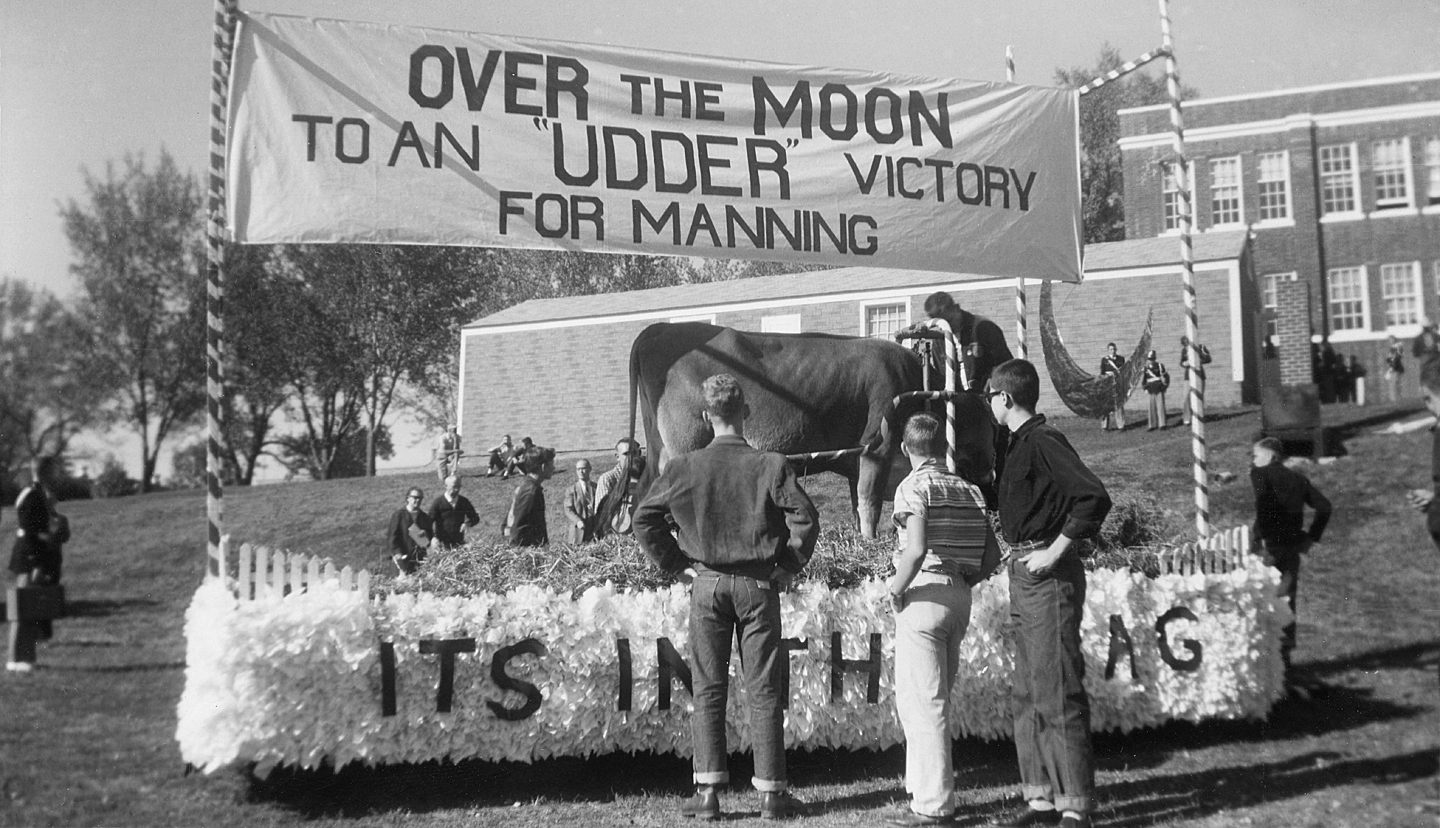
Yes, that is a real live milk cow on the float.
In the background is the old band room which was a WWI barracks
that was moved in for the band.
For years I've been trying to find out from where but all of the old timers I asked years ago didn't know.
If anyone has a clear picture of this barracks with nothing in front of it, please let me know so I can scan it.
I think that is Art Rix in the middle back ground "light suit coat."
Iowa No. 2 Kindergarten
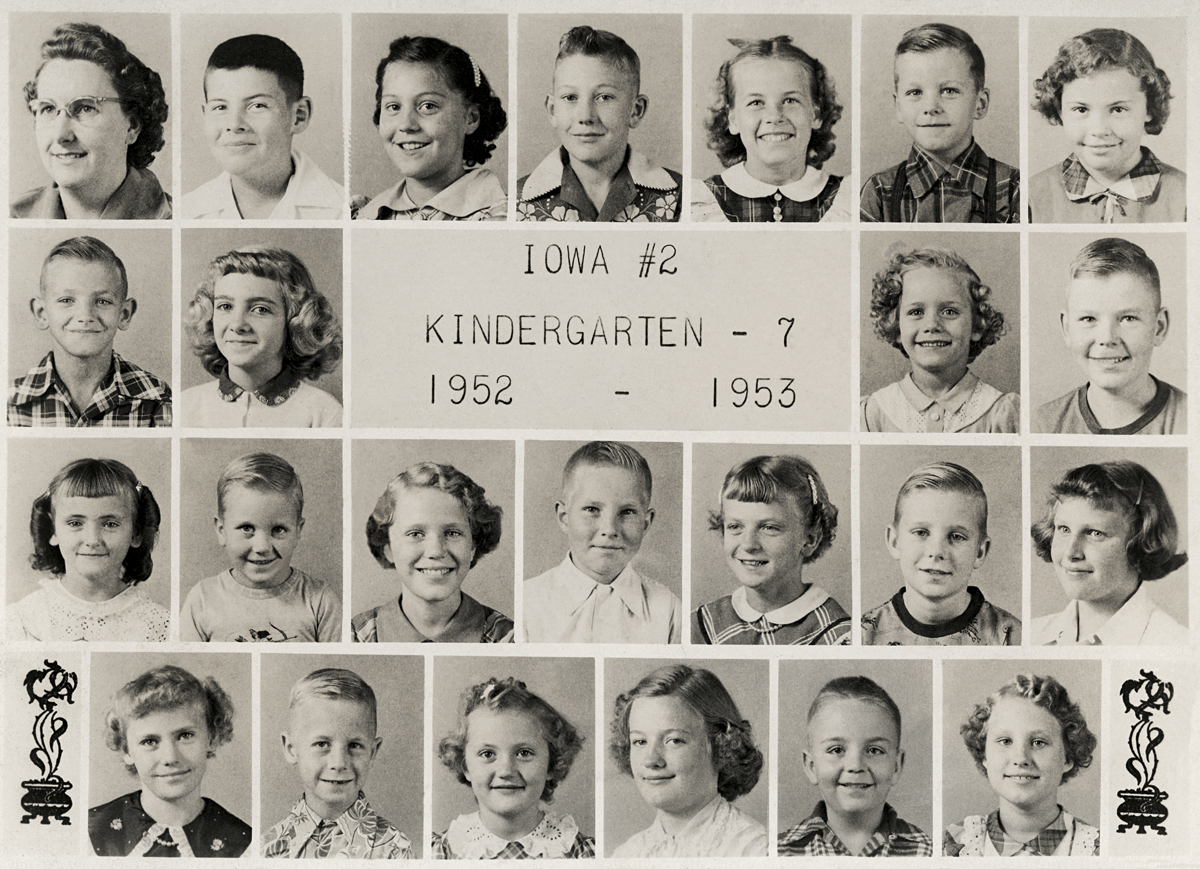
Top: Louise (Lamp) Koester, Bill Sharp, Betty Saunders, Dale Koester, Joyce Mahnke, Daryl Dammann, Carole Sharp
Second: Dale Damman, Shirley Fuller, Gloria Jorgensen, Allen Nissen
First: Ruby Dammann, Tommy Fuller, Marla Lamaack, Roger Schroeder, Betty Dammann, Dale Fuller, Deloris Schroeder
Bottom: Donna Kuhl, Gene Mahnke, Colene Anthony, Linda Meggers, Ronnie Nissen, Valda Lamaack
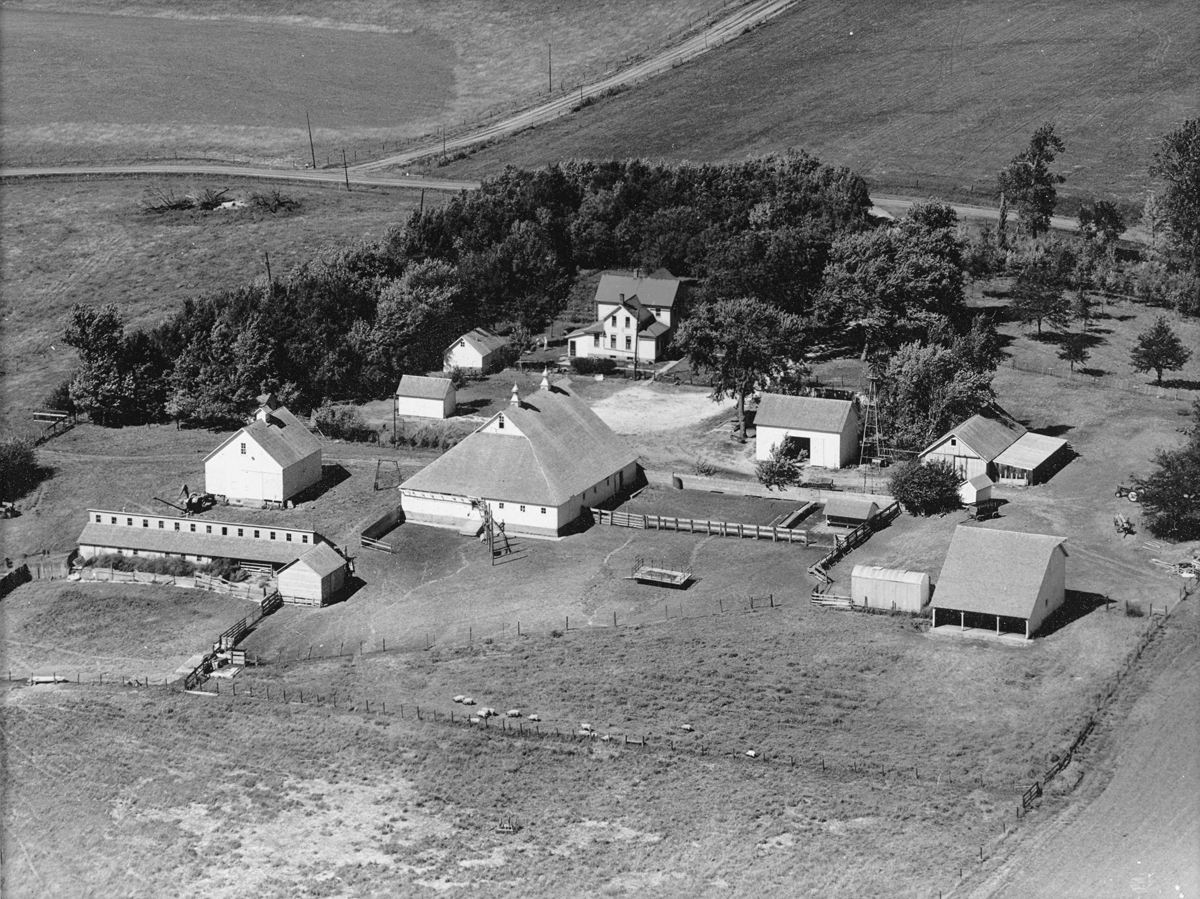
This isn't the old Meggers farm up northwest of Manning and I don't recall where the old
Frank farm was...I don't think it was where Russ & Linda lived later years and it isn't this farm.
I don't recognize the T intersection with road that curves.
I'll have to ask Rod if he knows where this farm was.
This Moore feature ties into the feature farther down below - about what we all individually deem as important in our lives and the historical events that preceded us...
Please read this article about the Moore family.
If you grasp it properly you'll see that Gilbert Moore died at Andersonville during the Civil War and three of his sons
also served, one of whom moved to the Manning area after the Civil War to join other Civil War survivors who moved here.
I'm NOT speaking for this family but when I see politicians and presidents go on apology tours about the "sins of our country's past," those who think in their ego-elevated
opinions of themselves feel they can judge people and events of the past, and some who lie and exaggerate about their own military records...and then I work on Manning's
history and run into the amazing sacrifices that individuals and families paid for our freedoms and this wonderful country, I feel obligated to highlight the GREAT things about our country
and how humble and thankful we all need to be...

Jacob died in 1908 and is buried in Concord Cemetery, Wabash County, Indiana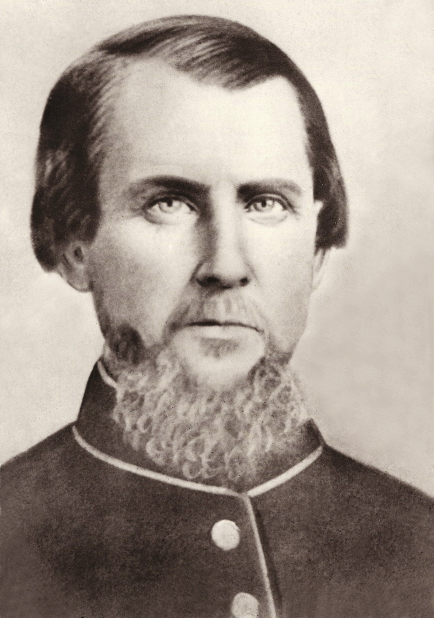
Gilbert Moore who died at Andersonville - prisoner of the Confederacey of the South during the Civil War
Joseph Moore family
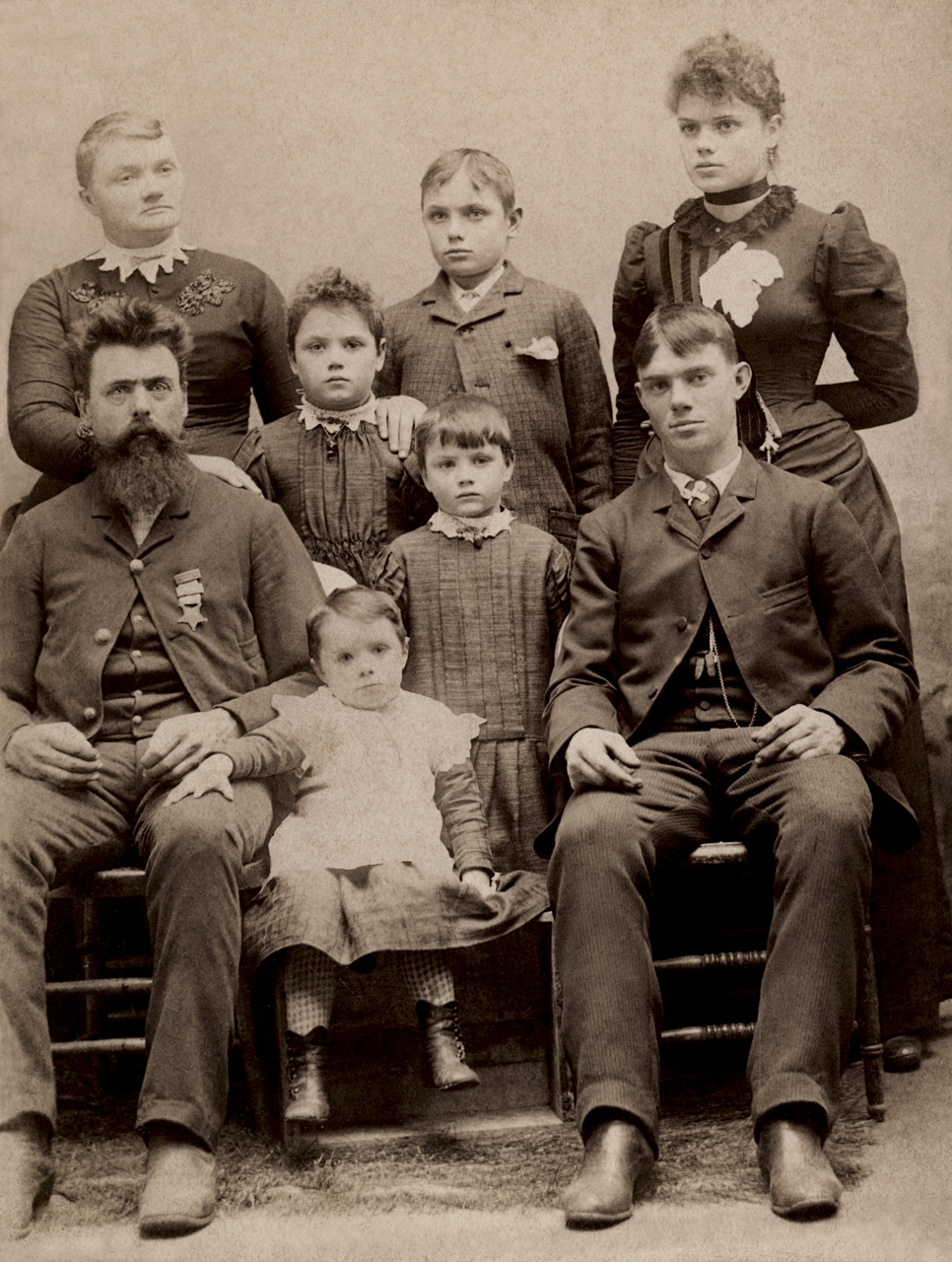
Back: Martha (Richards), Charley, Julia
Middle: Deed, Rhoda
Front: Joseph, Maud, Brick
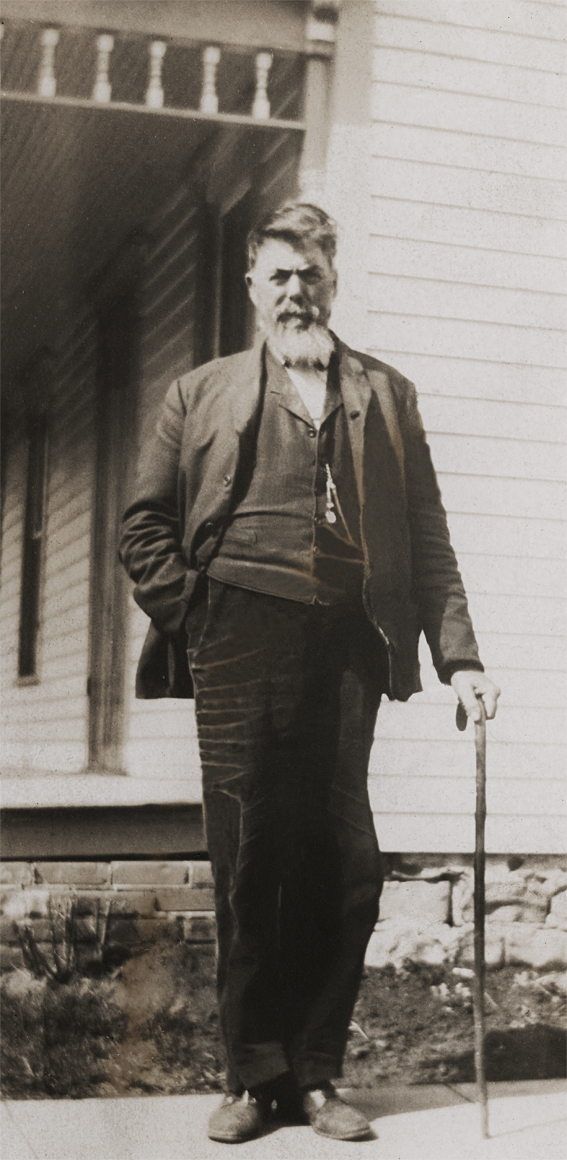
Joseph Moore
Did you know that we have a number of descendants in Manning of Civil War Veterans who lived in here.
Jan (Arp) Ranniger is a descendant of Donald Sutherland on her mother's side - Dorothy (Sutherland) Arp.
Then we have Russell Frank, son of Marjorie (Moore) Frank; Kim (Doyle) Fara whose mother was Joy (Moore) Doyle; Dorothy (Moore)
Strosahl; Gale & Chuck Moore; Harvey Dales, whose great-grandmother was Rhoda (Moore) Dales, all of whom are descendants of Gilbert & Joe Moore.
So while most people/families go about their daily lives quietly, I think we need to make sure that the amazing historical parts all families have in their past are NOT forgotten
and more importantly documented and archived for long-term preservation.
Another fact most people won't realize is that so far, I have 104 names of Civil War Veterans who lived in Manning, some of whom are buried here.
OLD SOLDIER DIES
Jacob Moore Passes Away After Weeks of Suffering.
Death came to Jacob Moore, one of the well-known farmers in the south east
part of the township, on Monday morning after an illness of several months from
dropsical and heart troubles. His condition had been very serious for two weeks
or more and his death was expected by his family at any time. Funeral took
place Wednesday afternoon at Concord Church in the neighborhood in which he
lived, being conducted by Rev. Spohn and Rev. Hidy. Interment was made in the
cemetery near the church. A large congregation was present to show the respect
in which the deceased was held in that community.
Jacob Moore was the son of Gilbert Moore and was born near
Treaty in the south part of Wabash County, June 16, 1846. At his death he
lacked but a few days of being 62 years of age. His father moved to this part
of the county in 1856 and this vicinity has been the home of the Moore family
ever since. During the civil war his father, Gilbert Moore, enlisted in the
101st Indiana Regiment and in the fortunes of war was captured by the rebels
and died a death of starvation in Andersonville Prison.
Afterwards his sons, Joseph, John, and Jacob, enlisted in
the 47th regiment and served during the war, all of them returning home.
Jacob Moore was married to Mary A. Hornaday after the war
and they have continued to make their home in this township, being among its most
respected citizens. They were the parents of five children, the two oldest
dying in infancy. Those living are Will Moore, of Mishawaka, Mrs. L.J. Lofland
and Miss Nellie Moore, of this township.
Besides these children his wife, three grandchildren,
several brothers and sisters and other relatives and friends survive him. The
surviving brothers and sisters are John Moore, of Andrews, Joseph Moore of
Iowa, Calvin Moore of Larwill, Quartes Moore of this
township, Mrs. W.H. Bolinger of Mishawaka, Mrs. Porter Cunningham of Pierceton.
The deceased was for many years an active and conscientious member of the Methodist
Church and was also a member of the Grand Army post of this city. Mr. Moore was
esteemed as a good citizen by all who knew him.
OLD SORREL-A condensation of a monograph by his great
grandson, Rev. Robert E. Walker. By Orrin Manifold
Old Sorrel OLD SORREL-A condensation of a monograph by his great grandson, Rev.
Robert E. Walker. By Orrin Manifold Source: NMHS Newsletter; Nov 1986 Old
Sorrel is the 1985 account of Gilbert Moore, a Chester Township farmer, and
American Civil War soldier. At the age of 43, father of eleven children he
enlisted in the Union Army, fought in Tennessee, was captured, and died in
Andersonville Prison. The account was researched and written by his great
grandson, Rev. Robert E. Walker. Moore was known as "Old Sorrel"
because of his red hair. Born in Rush County and married there in 1842, he and
his wife, Delilah, and several other families moved the next year to Wabash
County near Treaty, and then in 1856 he purchased an 80-acre farm in Chester
Township. After the Civil War broke out the Moore's' oldest son, John, enrolled
in Company D, 47th Indiana Volunteers of infantry. Two of his brothers would also serve in Company D.
In August 1862, Gilbert Moore enrolled in Company F, 101St
Regiment of Infantry Indiana Volunteers, He was probably recruited by Captain
Benjamin Williams of Wabash, In those days a well known man could enlist men and be elected by them as
an officer. The regiment met August 16 in Wabash for organization, speech
making, and flag waving, Joseph, age I8, and Jacob, 16, were old enough to
carry on the farm work. On September 2, the regiment boarded the train in
Wabash in high spirits. At Noblesville late in the evening local people fed
them chickens and turkeys, cakes and pies, melons, and
good coffee. They were officially mustered into the army September 5 at Camp
Morton in Indianapolis, and each man received a uniform, a blanket, gun,
haversack, and canteen. He had to furnish his own cup, plate, knife, fork,
spoon, and skillet. Two days later they left by train for Covington, Kentucky,
to protect Cincinnati, Which was being threatened by Rebel General Kirby Smith.
When he did not come, the regiment boarded a steamer the Ohio River and sailed
to Louisville, Kentucky. While in Kentucky for the next several weeks, they
found an occasion to visit Mammoth Cave. They engaged in action against
"Morgan the Raider," discouraging him from a Christmas raid into
southern Indiana and Ohio. In the next months there was brisk action in central
Tennessee against General Morgan and a conceited campaign in late June to drive the Rebels out of central Tennessee.
The northern troops pushed on towards Chattanooga, where
control of the railroads there was the key to the whole area. Heavy rains over
a considerable period of time made nasty weather. Often the men had to wade
rivers and creeks that had overflowed their banks. Several men died in the hospitals around Murfreesboro.
Confederate General Braxton Bragg, commander at Chattanooga,
decided to make a stand along Chickamauga Creek, a few miles from Chattanooga.
The battle continued for two days. The night between was cold, but there could
be no fires which would reveal their locations to the enemy. In the outcome of
the two day battle the northern forces were defeated: but General Bragg did not
follow up on his victory, so the Union Army claimed Chattanooga and held
control of communications and transportation. This made possible the capture of
Atlanta a year later and Sherman's March to the sea. On the first of the two
days the 101st from Indiana plunged into the battle about noon. About 2:30 p.m.
Confederate General Alexander Stewart made an attack which pushed the Union army
back in this section, Lt, Richard Busick was wounded, and an officer ordered
Corporal Gilbert Moore to stay with him. When the Union Army pulled back. Moore
"refused to leave the lieutenant and was taken prisoner by the
Rebels" - as was also Lt. Busick. From the battlefield he was sent to a
prison in Richmond-probably by way or Atlanta and Augusta, since the Union
forces controlled any direct route. He arrived there September 29. It is not
known in which of the five prisons he was confined. Most Of the prisons there
were brick tobacco warehouses, two or three stories high.
In October General Robert E. Lee suggested that there were
too many prisoners in Richmond, so six brick or wooden tobacco factories in
Danville, Virginia, were hastily readied to receive prisoners. Gilbert Moore
and William Busick were sent to one of these Danville prisons December 12,
1863. That day a smallpox epidemic swept through the city. At some later
time-perhaps in early March 1864-Moore and Busick were transferred to the
Andersonville, Georgia, prison. A double stockade of twenty-foot pine longs enclosed
26 1/2 acres. Stockade Creek-about five feet across and a foot deep-was used
for bathing, cooking, drinking, washing clothes, and flushing out the sinks. As
the war continued and the prison population grew larger, the food deteriorated.
In all, 12,912 men who were imprisoned there died and were buried in the
cemetery. Disease was common-particularly scurvy, diarrhea, gangrene, and
dysentery. Scurvy makes one's extremities swell to twice their size and the
patient's teeth often become loose and fall out.
It is reported of Gilbert Moore that "three hours
before his death he pulled out his teeth, then checked into the Prison Hospital
where he died that same day," probably September 4, 1864, two days after
Atlanta surrendered to General Sherman. Note: The above photograph of "Old
Sorrel" in War uniform is from the collection of Nancy J. Reed. Gilbert
Moore was Nancy 's [3 X] grandfather. Description: This story was found on the
website for North Manchester, Indiana Historical site: http://www.nmanchesterhistory.org/military.aspx
Another unique image...
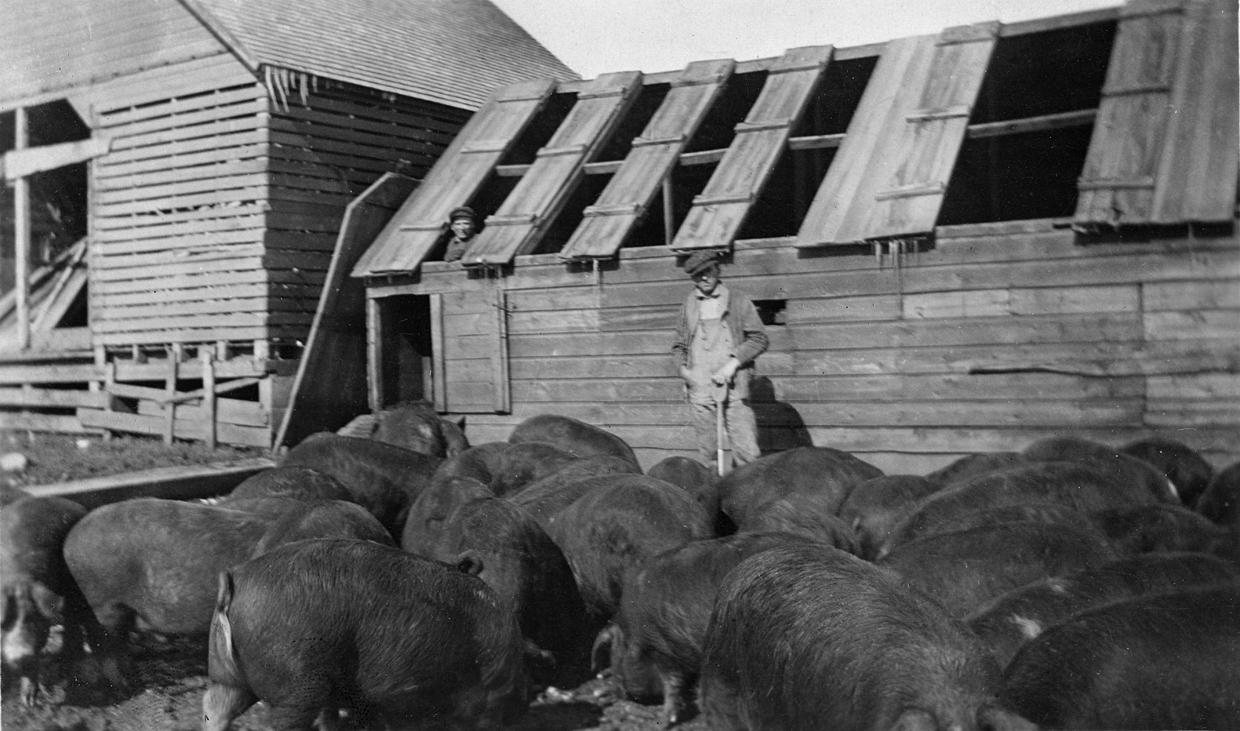 I have seen all types of ventilation and windows in a hog house roof but this is another FIRST.
I have seen all types of ventilation and windows in a hog house roof but this is another FIRST.
Not sure how water-proof these doors are, but it would definitely give good ventilation and allow sunshine in.
I also noticed this was in the winter - note the ice-cycles hanging from the roof.
I think this is Herman Frank in the yard - and could be his brother Carl in the hog house.
In between mowing the farm yard, working on a garage door, and now on our grain elevator leg, taking pix of the new gym construction and new homes in the new development
area of the town, I still get in some scanning...
Here are the most recent scans from the Russ & Linda (Meggers) Frank huge collection.
It is always interesting but sad how every family has to deal with tragedy from time to time.
We often forget that when we have
something tragic occur in our own family that something similar is going on in so many other families.
Russ never got to know his biological father who was tragically
kicked by his horse and died shortly thereafter...this was when Russ was a baby.
I always like to scan and show old farm pictures - it can give a different perspective to people living today, so they understand how easy they have it and how hard
people physically worked years ago...
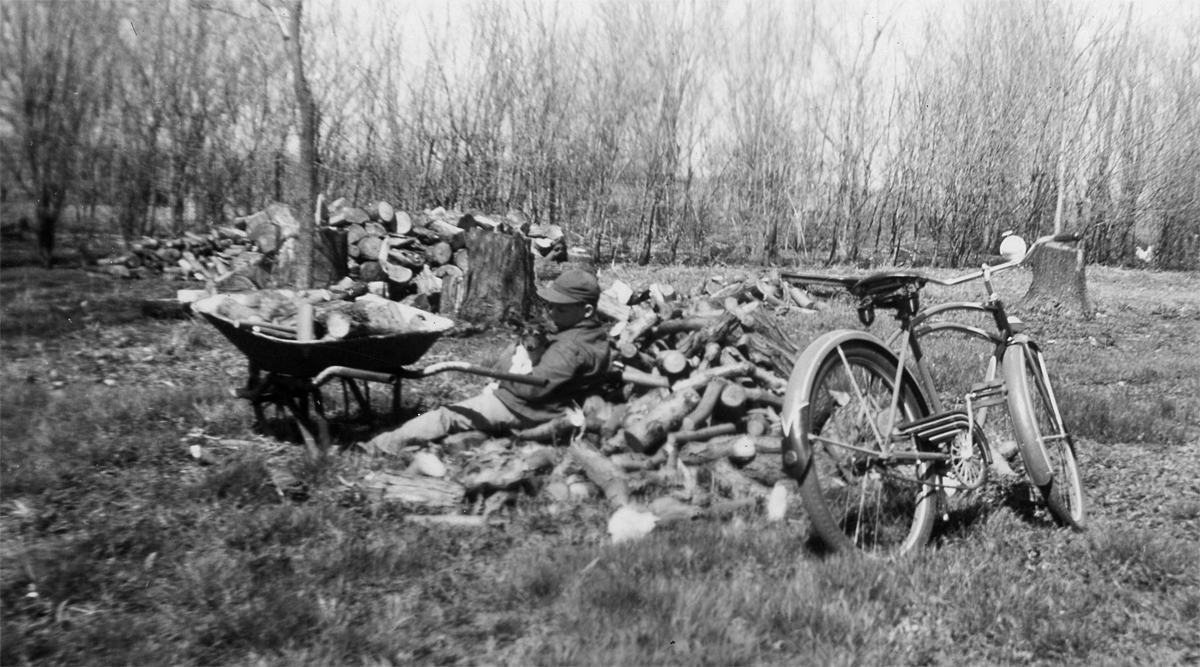
Russ Frank with his dog and bike, taking a break from hauling fire wood to the house or woodshed with the steel-wheel, wheelbarrow.
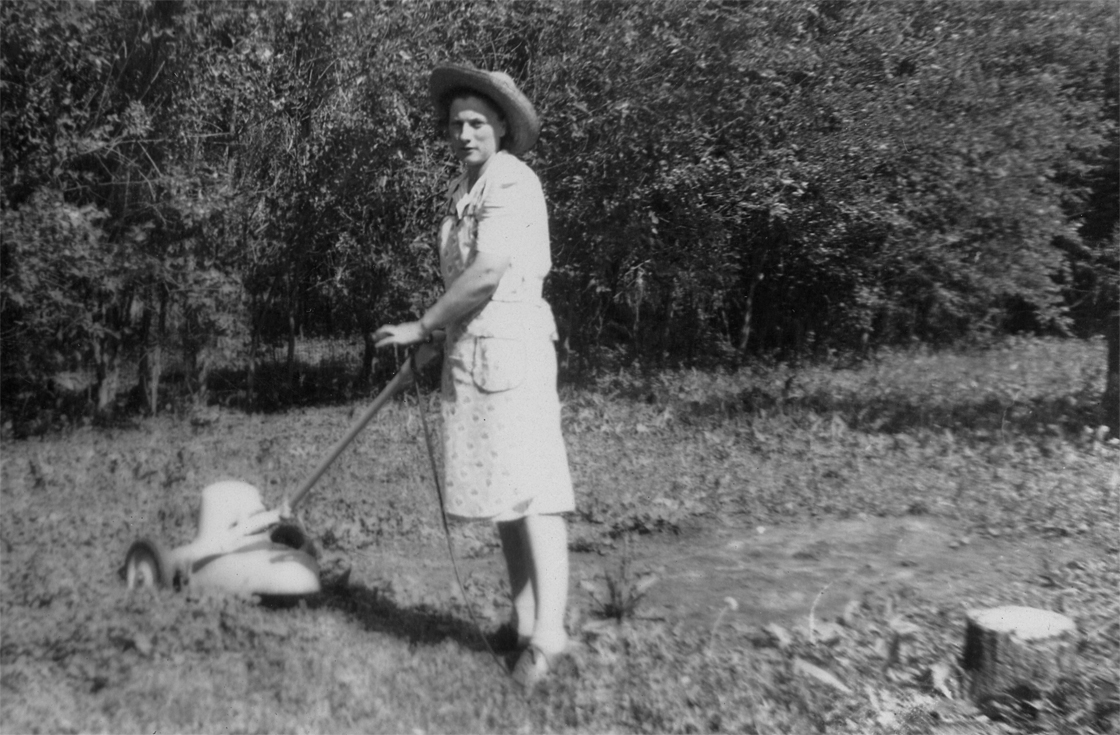
Marjorie Frank with an electric weeding machine for her garden.
I have never seen anything like this - especially electric from
so long ago.
If anyone can tell me more about this garden tool - please let me know.
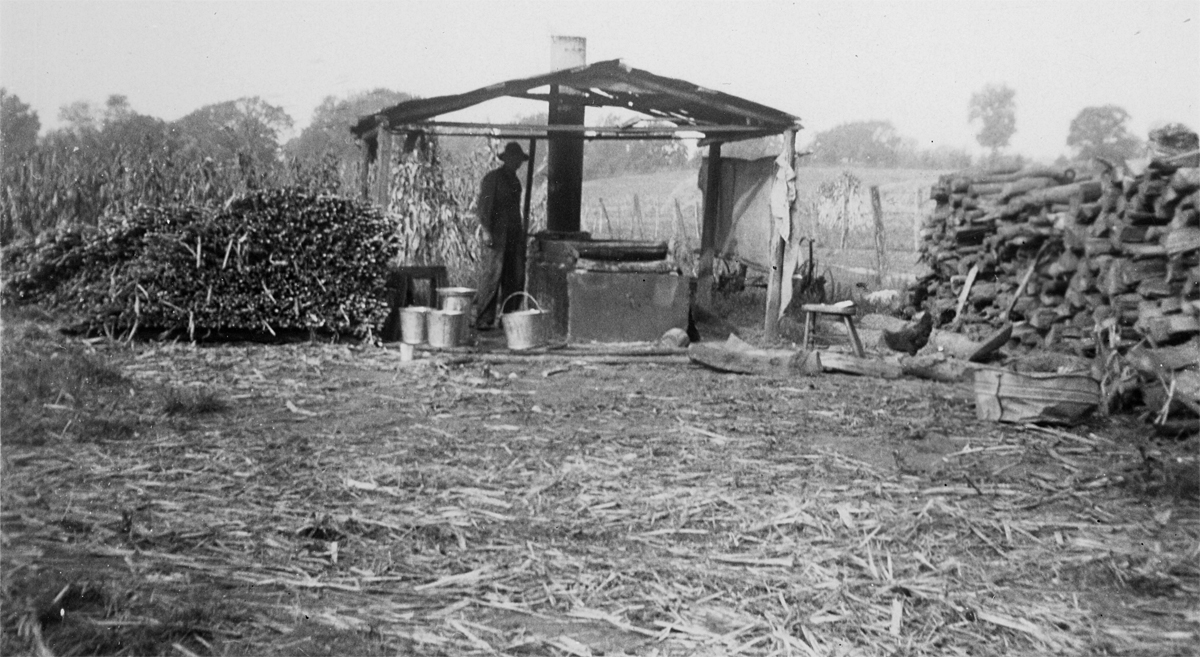
Philip Wallentine making syrup - Burlington, Iowa
Bertha (Wallentine) married Brick Moore in Botna.
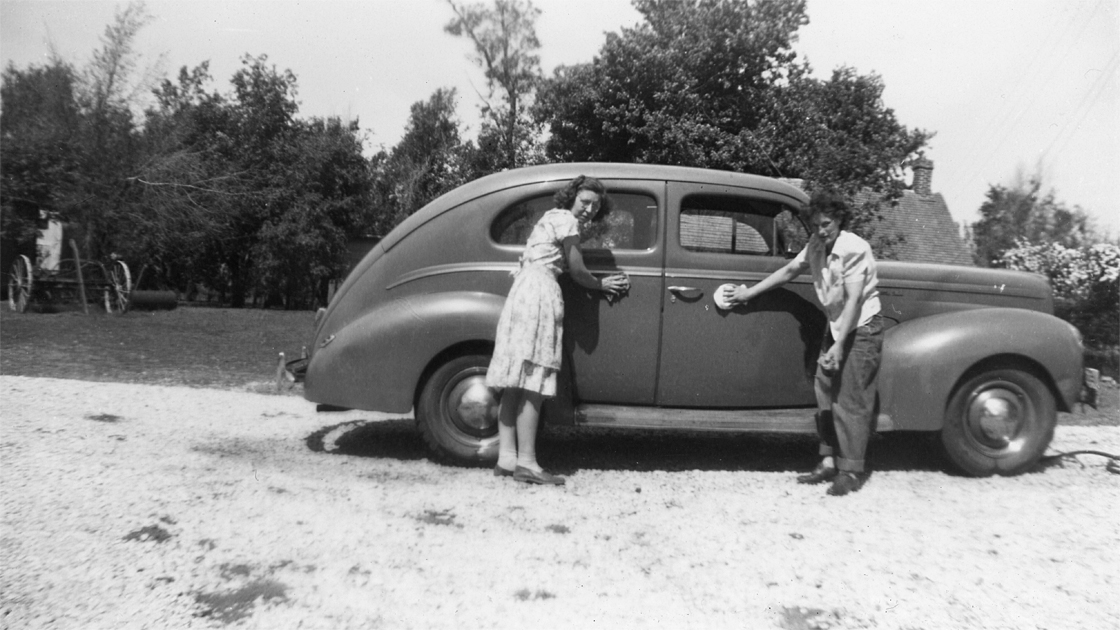
Leona Gruhn and Marjorie Frank washing the Frank car.
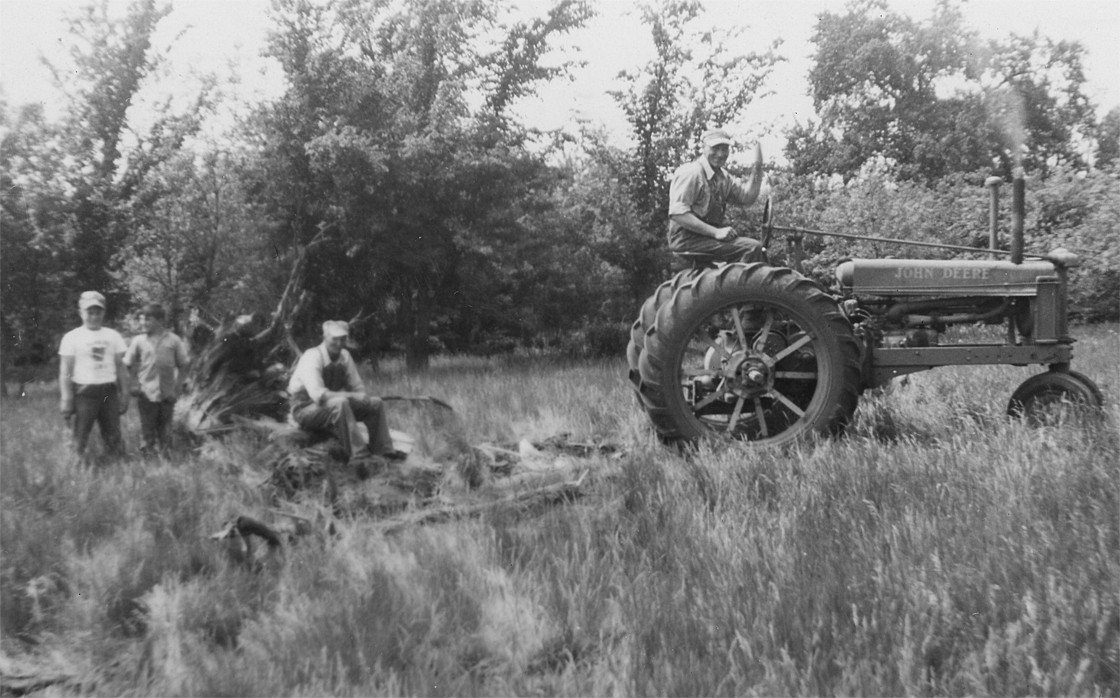
I'm guessing this was tree and stump removal.
Robert Moore, Russ Frank, Clinton Moore, Tom McKeever
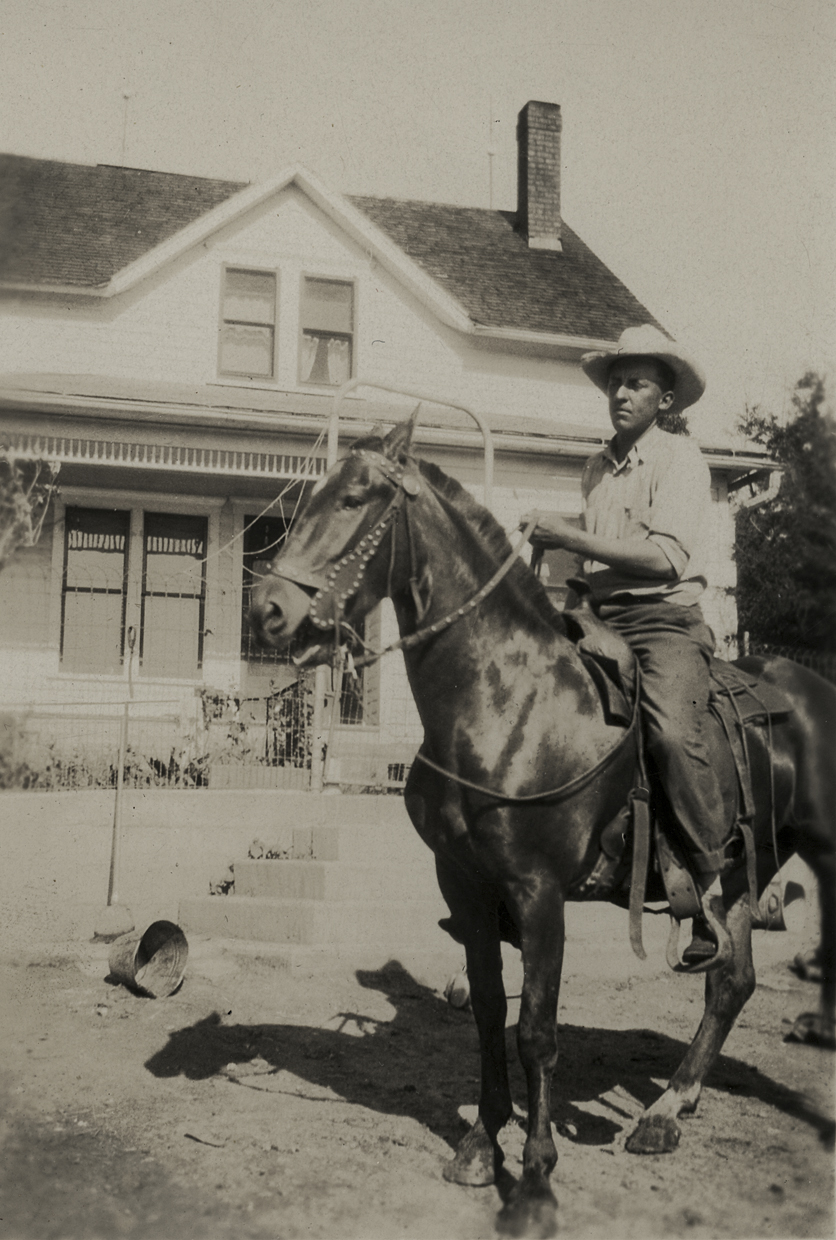
Herman Frank on his horse.
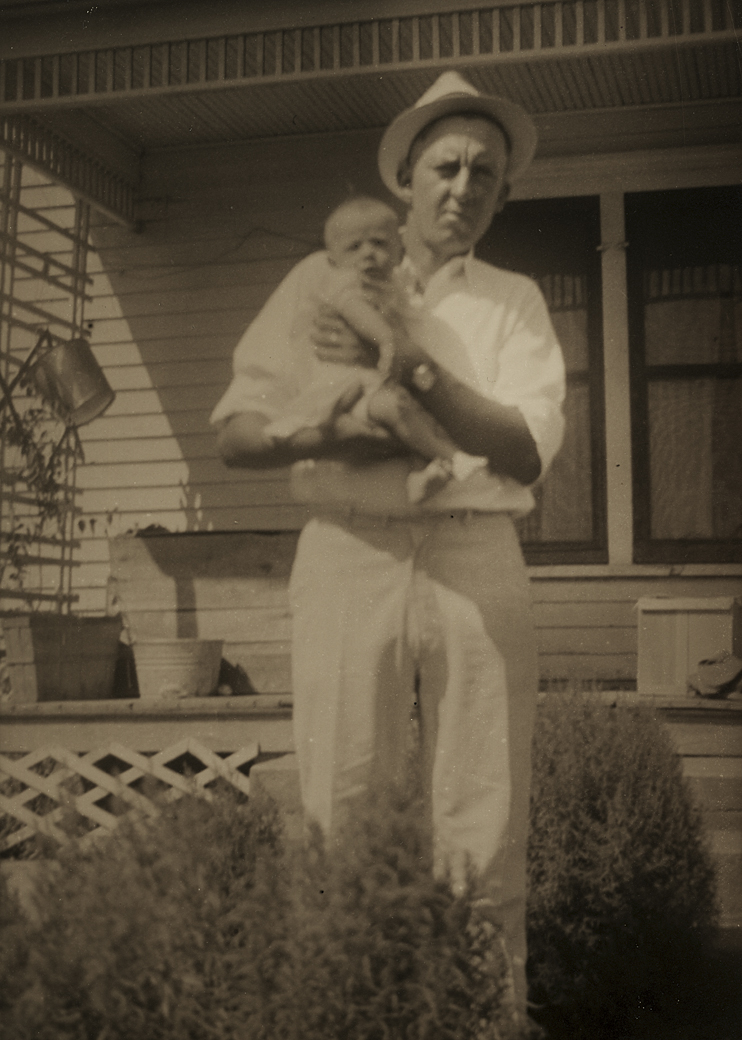
Herman holding Russ, shortly before he died.
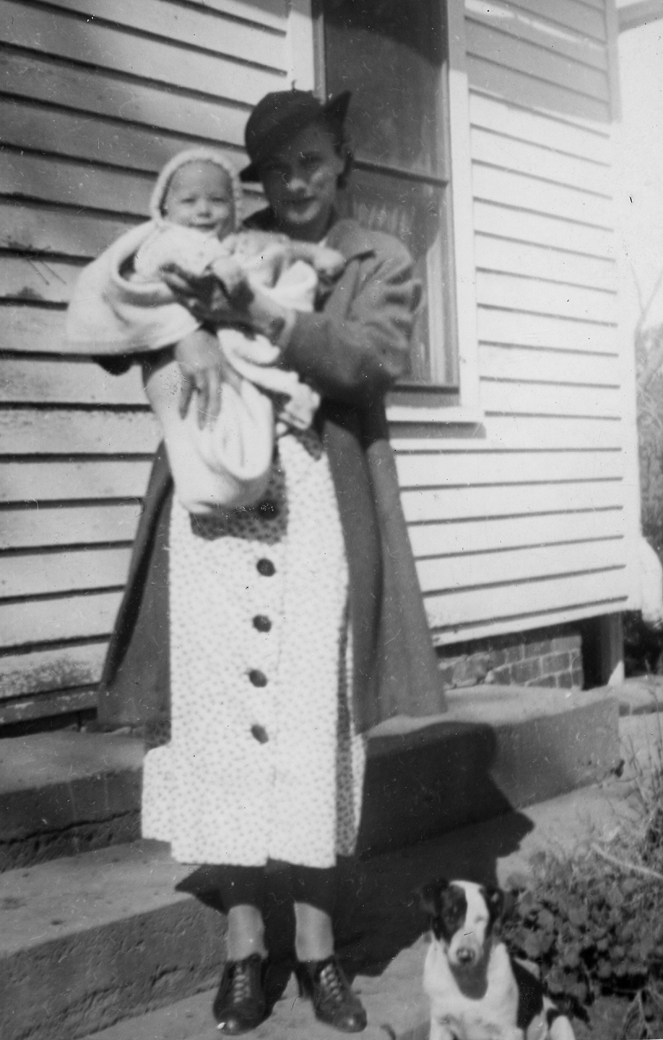
Marjorie (Moore) Frank holding Russ
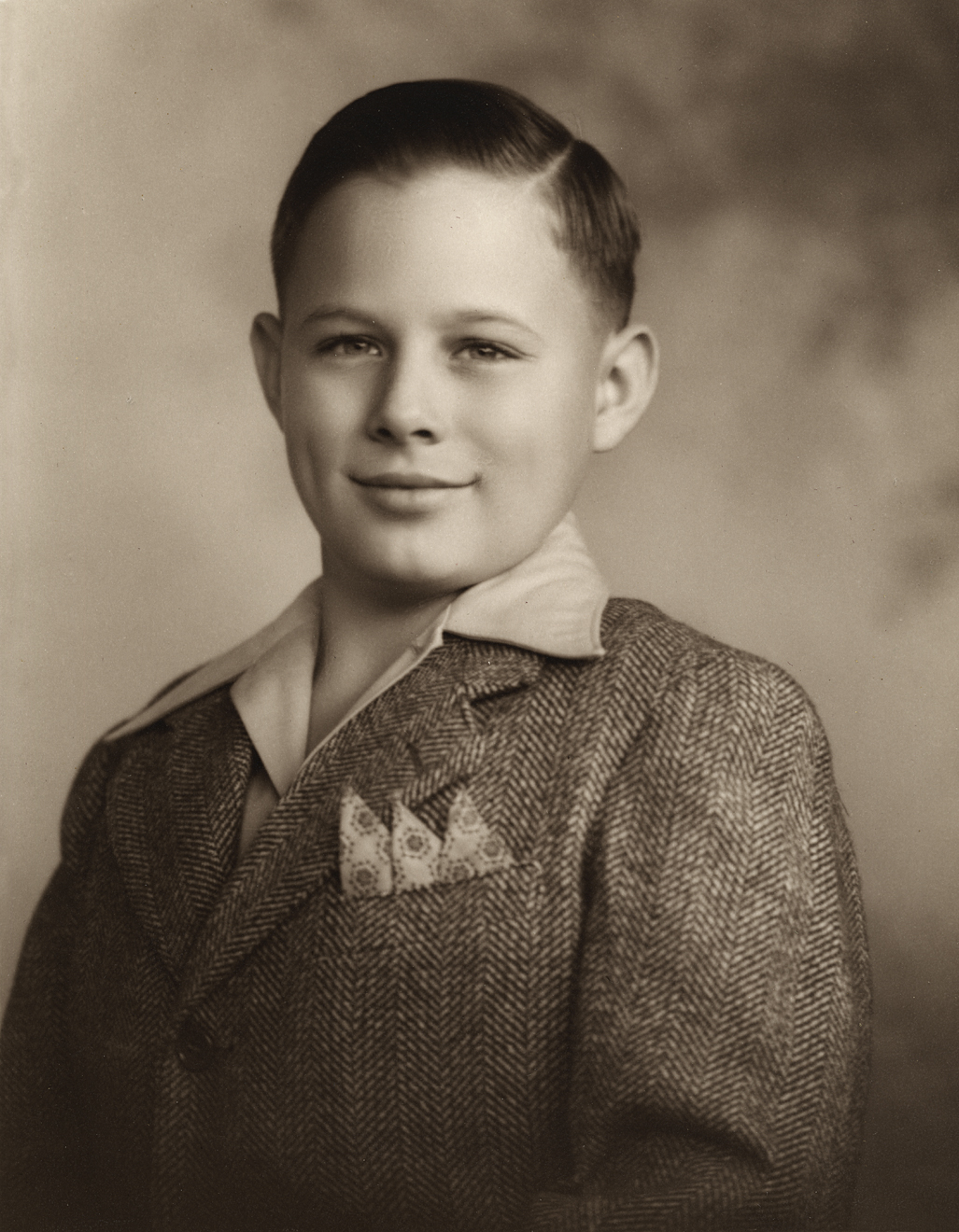
Russell

Halloween October 31, 1975 Kim, Rod & Vicki Frank

Nettie (Moore) Grau MHS 1920 - later Mrs. Walter Grau
Now we are getting into my family tree - Walter is my relative.
This is why I always like to go through Manning connected people's collections, as I'll generally also find my own relatives too.
Back to Dave Kusel's main page


















